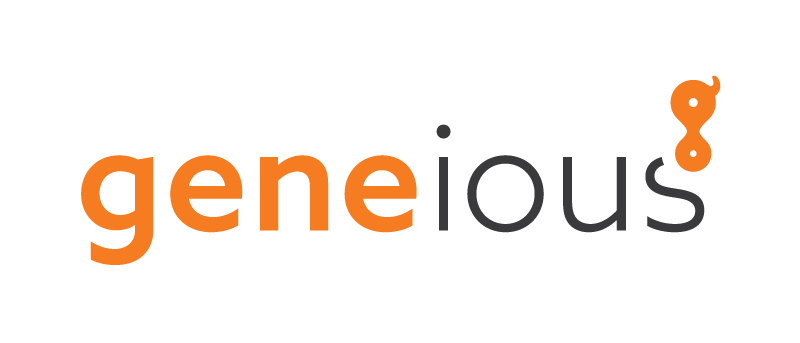Team:NTNU Trondheim/Team
From 2014.igem.org
(Difference between revisions)
| Line 189: | Line 189: | ||
</li> | </li> | ||
<li class="pg-project_background"> | <li class="pg-project_background"> | ||
| - | <a href="https://2014.igem.org/Team:NTNU_Trondheim/Project | + | <a href="https://2014.igem.org/Team:NTNU_Trondheim/Project/Modelling">Modelling</a> |
| - | + | ||
| - | + | ||
| - | + | ||
| - | + | ||
| - | + | ||
| - | + | ||
</li> | </li> | ||
<li class="pg-project_hprac"> | <li class="pg-project_hprac"> | ||
| - | <a href="https://2014.igem.org/Team:NTNU_Trondheim/Project"> | + | <a href="https://2014.igem.org/Team:NTNU_Trondheim/Project/Outreach">Outreach</a> |
</li> | </li> | ||
<li class="pg-project_future"> | <li class="pg-project_future"> | ||
| - | <a href="https://2014.igem.org/Team:NTNU_Trondheim/Project">Future Applications</a> | + | <a href="https://2014.igem.org/Team:NTNU_Trondheim/Project/Future">Future Applications</a> |
</li> | </li> | ||
<li class="pg-project_safety"> | <li class="pg-project_safety"> | ||
| - | <a href="https://2014.igem.org/Team:NTNU_Trondheim/Project">Safety</a> | + | <a href="https://2014.igem.org/Team:NTNU_Trondheim/Project/Safety">Safety</a> |
| + | </li> | ||
| + | <li class="pg-project_safety"> | ||
| + | <a href="https://2014.igem.org/Team:NTNU_Trondheim/Judging">Judging criteria</a> | ||
</li> | </li> | ||
</ul> | </ul> | ||
</li> | </li> | ||
| - | <li class=" | + | <li class="pg-outreach pg-outreach_presentations pg-outreach_panels pg-outreach_awareness"> |
<a href="https://2014.igem.org/Team:NTNU_Trondheim/Team">Team</a> | <a href="https://2014.igem.org/Team:NTNU_Trondheim/Team">Team</a> | ||
</li> | </li> | ||
| - | <li class=" | + | <li class="pg-notebook pg-notebook_protocols pg-notebook_plasmids"> |
<a href="https://2014.igem.org/Team:NTNU_Trondheim/Notebook">Notebook</a> | <a href="https://2014.igem.org/Team:NTNU_Trondheim/Notebook">Notebook</a> | ||
<a href="https://2014.igem.org/Team:NTNU_Trondheim/Notebook" class="flyout-toggle"><span> </span></a> | <a href="https://2014.igem.org/Team:NTNU_Trondheim/Notebook" class="flyout-toggle"><span> </span></a> | ||
| + | </li> | ||
| + | <li class="pg-outreach pg-outreach_presentations pg-outreach_panels pg-outreach_awareness"> | ||
| + | <a href="https://2014.igem.org/Team:NTNU_Trondheim/Protocols">Protocols</a> | ||
| + | </li> | ||
| + | <li class="has-flyout pg-outreach pg-outreach_presentations pg-outreach_panels pg-outreach_awareness"> | ||
| + | <a href="https://2014.igem.org/Team:NTNU_Trondheim/Sponsors">Acknowledgements</a> | ||
| + | <a href="https://2014.igem.org/Team:NTNU_Trondheim/Project" class="flyout-toggle"><span> </span></a> | ||
<ul class="flyout"> | <ul class="flyout"> | ||
| - | <li class="pg- | + | <li class="pg-project"> |
| - | <a href="https://2014.igem.org/Team:NTNU_Trondheim/ | + | <a href="https://2014.igem.org/Team:NTNU_Trondheim/Acknowledgements/Sponsors">Sponsors</a> |
</li> | </li> | ||
| - | <li class="pg- | + | <li class="pg-project_background"> |
| - | <a href="https://2014.igem.org/Team:NTNU_Trondheim/ | + | <a href="https://2014.igem.org/Team:NTNU_Trondheim/Acknowledgements/Attributions">Attributions</a> |
| - | + | ||
| - | + | ||
| - | + | ||
</li> | </li> | ||
</ul> | </ul> | ||
| - | |||
| - | |||
| - | |||
| - | |||
| - | |||
| - | |||
</li> | </li> | ||
<li class="pg-badge"> | <li class="pg-badge"> | ||
| Line 240: | Line 235: | ||
</div> | </div> | ||
</li> | </li> | ||
| + | |||
| + | |||
</ul> | </ul> | ||
<div class="clearfix"></div> | <div class="clearfix"></div> | ||
Revision as of 12:21, 15 October 2014
Team:NTNU_Trondheim/Home
From 2014.igem.org
-
Team
- Team Members
- Instructors
Team Members

Elias Augestad
Filler.Ronja Hesthammer
Filler.

Pål Røynestad
Filler.Camilla Marstrander Reehorst
I completed my Master of Science degree in 2014 at Norwegian University of Science and Technology located in Trondheim. My specialisation was biopolymer chemistry and the focus of my master thesis was drug penetration and bioavailability through the mucus barrier. My main research area interest is medical biotechnology. I have now moved to Melbourne, Australia, and will hopefully commence a PhD at the University of Melbourne within the medical field from the start of 2015.In relation to my focus area, the iGEM project has been rather peripheral; however, I have enjoyed the new techniques and experiences. I also think that as a researcher it pays off to have an basic understanding about the mechanics of multiple research areas, not only the one you’ve submerged yourself in.


Eivind Bøe Drejer
Filler.Line Aanerud Omtvedt
Filler.

Jacob Lamb
I started my research in a laboratory at the University of Otago in Dunedin, New Zealand with Professor Julian Eaton-Rye and Associate Professor Martin Hohmann-Marriott. I completed of my Master of Science degree in 2012 in the field of Biochemistry, focusing on renewable energy studies in photosynthetic organisms. I then moved to Trondheim, Norway to undertake a Ph.D. research fellowship under the supervision of Associate Professor Martin Hohmann-Marriott in the department of Biotechnology, at NTNU. My Ph.D. research looks at using cyanobacteria (and other photosynthetic organisms) as a source of energy/biofuels.As a consequence, this iGEM project our team has undertaken is of up-most interest for me personally, as I believe that photosynthesis holds the solution to a lot of the problems our society will face in the coming years.
Instructors

Dr. Rahmi Lale - Microbial Biotechnology
I have obtained my PhD degree in 2009, within the field of microbial biotechnology. Currently, I am working as a researcher at the Department of Biotechnology, NTNU.My main research focus areas are bacterial transcriptional and translational regulation, synthetic biology/metabolic engineering and metagenome/biodiscovery.
I have been working with various organisms including E. coli, mesophilic and psychrophilic Pseudomonas sp., Streptomyces sp, Shewanella sp., Pseudoalteromonas sp., Synechocystis sp., lactic acid bacteria, and yeast.
Dr. Eivind Almaas - Systems- and network biology
During the last few years, network approaches have shown great promise as new tools to analyze and understand complex systems. In biology, network formulations of a system naturally appear in situations ranging from food webs in ecology to biochemical interactions in molecular biology. In particular in the cell, the variety of interactions between genes, proteins and metabolites are well captured by a complex network description. My research is focused on developing both general and specific methods to understand the principles behind the design and organization of biological systems.There is close connection between systems and synthetic biology, and the iGEM competition is a natural arena to explore this tight relationship.


 "
"
 "
"





